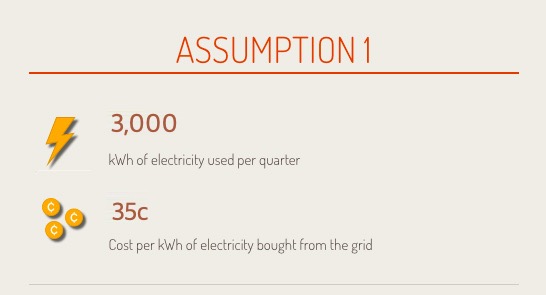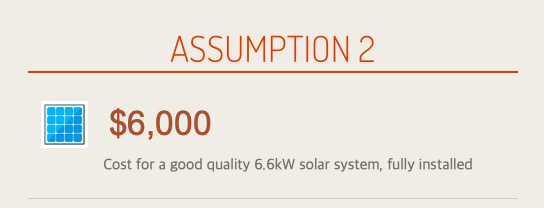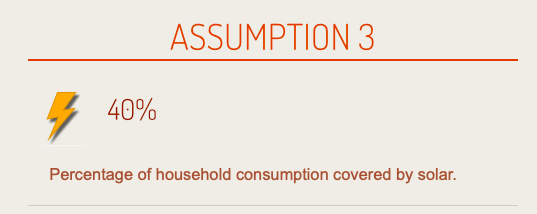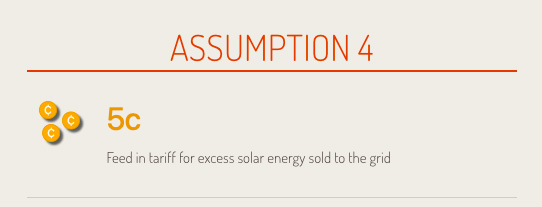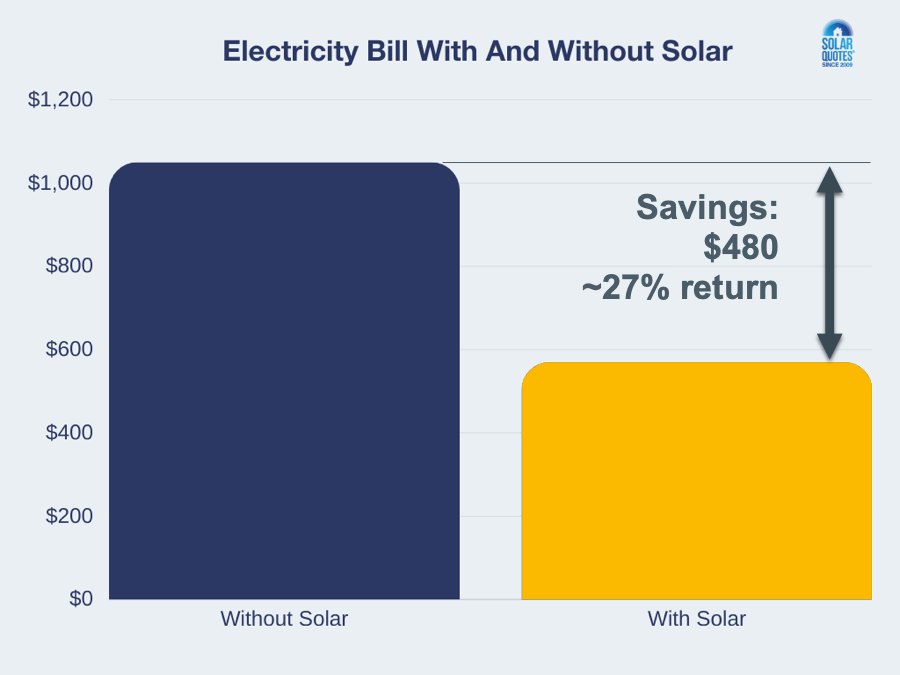Will A Solar System Save You Money In The Long Run?
By Finn Peacock Chartered Electrical Engineer, Ex-CSIRO & Founder of SolarQuotes
Last Updated: 28th Aug 2024
At the time of writing (Aug 2024), there are over 3.8 million solar PV installations in Australia. The vast majority of these are residential.
You wouldn’t get to that many installations if solar didn’t provide real, tangible benefits for those who installed it (the main benefit being a reduction in your electricity bills).
But – it can sometimes be a little hard for the average Aussie to wrap their head around:
a) exactly how installing solar PV can save them money, and
b) determining how long it will take to see a return on an investment in solar.
To illustrate the answers to a) and b), I’ve come up with the example below. Please note that these are simple, rounded numbers to provide a clear example.
(Before we get started, it is important that you understand the difference between a kW and a kWh – this article explains in detail.)
Say your household uses 3,000 kWh of electricity per quarter. If you don’t have solar, you’re paying around 35c per kWh for every kWh from the grid.
3,000 kWh x 35c per kWh = A $1,050 quarterly bill for the non-solar owner, before fixed service charges are added on.
This is a doozy of an electricity bill.
You’ve spoken to some friends with installed solar who have referred you to their installer, or maybe you’ve got quotes for solar online, and you’ve honed in on a quote for a 6.6kW system for around $6,000 (which is a fair price for a well-installed 6.6kW system using good equipment).
The salesman has assured you that this system will make a significant dent in your electricity bills – but of course, he will say that. How can you realistically determine if that $6,000 investment is worth it?
Breaking down the savings from residential solar.
If you generate electricity with a solar system and don’t feed it back into the grid, because you’ve used it to power something in your home, the electricity is ‘free’, or zero cents per kWh.
The sun isn’t out 24 hours a day, though – so this means that you can only get your ‘free’ electricity from around 6am – 6pm.
Still, let’s make the assumption that 40% of your total electricity consumption is met by your solar system.
40% of 3,000 kWh = 1,200 kWh of self-consumed solar.
This means you’ve only had to buy 1,800 kWh from the grid at 35c per kWh.
So, the solar owner has only used $630 (35c x 1,800kWh = $630) of grid electricity.
When you export excess solar energy that isn’t used in your home, you’re paid a ‘feed-in tariff’ by your electricity provider. It is typically anywhere between 2-15c per kWh exported. In this example, we’ll use a 5c feed-in tariff.
So, we credit the 5c per kWh for the excess solar energy you’ve exported. If this is a 6.6kW system, you’d probably have exported about 1,200kWh of your solar generation. You would be credited $60 (5c x 1,200kWh).
$630 (bill with solar) – $60 (credit from exports) = $570 (net quarterly bill with solar).
Your new bill will, therefore, be $570 (before fixed service charges).
If the other seasons are similar, you are saving $480 per quarter ($1,050 – $570 = $480), or over $1,900 per year with solar.
Once you combine the ‘invisible’ savings (from not needing to purchase electricity from the grid) with the feed-in tariff, the amount of money solar saves you can translate to a respectable return on investment.
Saving $1,900 annually gives you a 31% return on a $6,000 system that should last 25+ years (with one inverter replacement). And if electricity prices rise, the return on your system will rise with them.
But what if I’m not home during the day?
If you are not at home during the day, then less solar electricity will be directly consumed by the home. This will reduce the savings, but that doesn’t stop solar being worthwhile. In the example above, the home would get less of its electricity consumption from solar. If solar covered 25% of consumption (don’t forget about weekends) then the savings would come to $1,380 a year. This is still around a 20% return and a simple payback time of 4.5 years.
(Side note: Avoid any solar company that calculates your payback based on 100% self-consumption. Almost no-one has 100% self-consumption.)
What if I have a time-of-use tariff?
The above calculations are based on a flat tariff. But you may be on a time-of-use tariff with rates depending on when electricity is used. It’s common for people to be put on one if they get solar. Whether or not you can change back depends on where you are.
A time-use-tariff can affect savings, but it’s not enough to stop solar from being worthwhile. Its exact effect will depend on where you are, your electricity plan, and consumption patterns – but being on one often won’t make a large difference.
Of the states where you’ll be required to change to a time-of-use tariff if you get solar, South Australia has the highest peak rates in the evening and the lowest rates in the middle of the day. But if your electricity consumption pattern is fairly typical, your annual bill there with 6.6kW of solar on a time-of-use tariff would still be around $1,900 less than it would be on a flat tariff without solar.
The actual savings will heavily depend on when electricity is used. The more consumption that is shifted to the daytime, the better.
What If I Don’t Use Much Electricity?
If only a couple of people are in your household, or you’re just very careful with energy use, you may not use much electricity. This will reduce the savings from solar, but if a household only uses 1,000kWh a quarter, most in Australia will still be able to save over $1,000 a year with a 6.6kW system. This gives a simple paypack period of around 6 years and a return on investment of over 16%.
The payback period can be shortened by installing a smaller solar system, but I don’t recommend this because…
Bigger Solar Is Better
A 6.6kW solar system was used in the example above, but these days that’s small. The average new system is now over 8kW and, provided you have the roof space, I recommend installing over 10kW.
This is because most people will find the extra capacity still pays for itself and it will future proof your home.
Cars are going electric, and you may end up wanting to charge a couple of EVs using solar like I already do. Installing a home battery is also an option. Going large on your solar system now will ensure you’ll have plenty of free energy to meet future needs.
Is $1,900 per year a good return on a 6.6kW solar system?
A high-end 6.6kW system, at the time of writing (Aug 2024), will cost you about $6000 installed.
Getting $1,900 in annual savings gives a simple payback of just over 3 years.
And this is where we come to another misconception about the returns from an investment in solar. Many folks believe that a payback of 3 years means they’ll see no financial benefit for 3 years. This is wrong. We need to take cash flow into account.
When you work out the actual cash flows, many folks find that they are losing money by not having solar (Oh dear – I really am starting to sound like a sleazy salesman – sorry – but please bear with me)
Working out the simple cash flow for a $1,900 yearly return on a $6,000 spend.
Most people either pay for solar out of savings or add it to their mortgage.
If you have $6,000 in the bank right now, it is probably earning about 4% interest. Let’s call it 5% to make the maths easy.
If you add $6,000 to your mortgage, you are probably paying around 5% interest.
Either way, you have an “opportunity cost” or “cost of finance” of 5% ($300 per year) if you splash $6k on buying solar.
But outweighing this is the $1,900 per year you could save with solar.
(And if you add it to your mortgage, it should cost you about $10 per week to buy the solar system but it saves you ~$37 per week.)
And just to be clear – I’m not saying you will get this return if you buy solar. You may get less, you may get more. Your savings will absolutely depend on how much electricity you consume in daylight hours.
Will a battery improve your payback?
Buying a solar battery with your panels will reduce your bills even more but, counterintuitively, will probably make your system payback longer. Battery payback is a whole other article, but because batteries currently start at about $10,000 the extra money spent compared to the extra savings usually means a longer payback for solar+battery than for solar alone.
